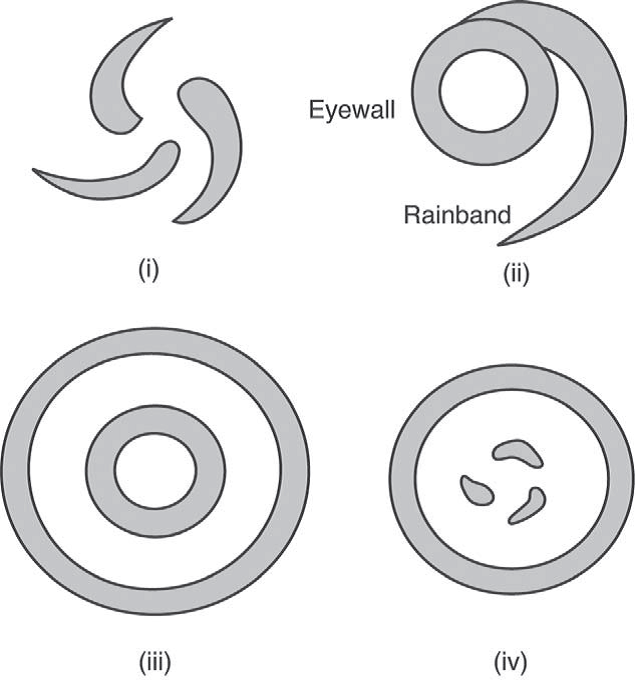|
ERICA (Meteorology)
The Experiment on Rapidly Intensifying Cyclones over the Atlantic, or ERICA, is a scientific project that spanned a period of 1986-1991, with a field study in the winter of 1988/1989. The program was funded by the Office of Naval Research. Its aims were to better understand the processes involved in rapid cyclogenesis, and so improve understanding and forecasting Forecasting is the process of making predictions based on past and present data. Later these can be compared with what actually happens. For example, a company might Estimation, estimate their revenue in the next year, then compare it against the ... of the situations that cause it by incorporating study findings into weather models. The ERICA program used several methods, such as buoys and aircraft, to measure data in rapidly intensifying extratropical cyclones, selected with a criterion of at least 10 millibars of deepening over 6 hours. See also * RAINEX References Meteorology research and field projects ... [...More Info...] [...Related Items...] OR: [Wikipedia] [Google] [Baidu] |
Ocean Prediction Center
The Ocean Prediction Center (OPC), established in 1995, is one of the National Centers for Environmental Prediction's (NCEP's) original six service centers. Until 2003, the name of the organization was the Marine Prediction Center.Ocean Prediction Center (2004)Ocean Prediction Center: 2003 Accomplishments. Retrieved on 2008-09-03. Its origins are traced back to the sinking of the RMS ''Titanic'' in 1912. The OPC issues forecasts up to five days in advance for ocean areas north of 31° north latitude and west of 35° west longitude in the Atlantic, and across the northeast Pacific north of 30° north latitude and east of 160° east longitude. Until recently, the OPC provided forecast points for tropical cyclones north of 20° north latitude and east of the 60° west longitude to the National Hurricane Center. OPC is composed of two branches: the Ocean Forecast Branch and the Ocean Applications Branch. History The first attempt as a marine weather program within the Unit ... [...More Info...] [...Related Items...] OR: [Wikipedia] [Google] [Baidu] |
Office Of Naval Research
The Office of Naval Research (ONR) is an organization within the United States Department of the Navy responsible for the science and technology programs of the U.S. Navy and Marine Corps. Established by Congress in 1946, its mission is to plan, foster, and encourage scientific research to maintain future naval power and preserve national security. It carries this out through funding and collaboration with schools, universities, government laboratories, nonprofit organizations, and for-profit organizations, and overseeing the Naval Research Laboratory, the corporate research laboratory for the Navy and Marine Corps. NRL conducts a broad program of scientific research, technology and advanced development. ONR's headquarters is in the Ballston neighborhood of Arlington County, Virginia. ONR Global has offices overseas in Santiago, São Paulo São Paulo (; ; Portuguese for 'Paul the Apostle, Saint Paul') is the capital of the São Paulo (state), state of São Paulo, as well a ... [...More Info...] [...Related Items...] OR: [Wikipedia] [Google] [Baidu] |
Cyclogenesis
Cyclogenesis is the development or strengthening of Cyclonic rotation, cyclonic circulation in the atmosphere (a low-pressure area). Cyclogenesis is an umbrella term for at least three different processes, all of which result in the development of some sort of cyclone, and at any size from the microscale meteorology, microscale to the synoptic scale meteorology, synoptic scale. * Tropical cyclones form due to latent heat driven by significant thunderstorm activity, developing a warm core. * Extratropical cyclones form as waves along weather fronts before occluding later in their life cycle as cold core cyclones. * Mesocyclones form as warm core cyclones over land, and can lead to tornado formation. Waterspouts can also form from mesocyclones, but more often develop from environments of high instability and low vertical wind shear. The process in which an extratropical cyclone undergoes a rapid drop in atmospheric pressure (24 millibars or more) in a 24-hour period is referred to a ... [...More Info...] [...Related Items...] OR: [Wikipedia] [Google] [Baidu] |
Forecasting
Forecasting is the process of making predictions based on past and present data. Later these can be compared with what actually happens. For example, a company might Estimation, estimate their revenue in the next year, then compare it against the actual results creating a variance actual analysis. Prediction is a similar but more general term. Forecasting might refer to specific formal statistical methods employing time series, cross-sectional data, cross-sectional or longitudinal study, longitudinal data, or alternatively to less formal judgmental methods or the process of prediction and assessment of its accuracy. Usage can vary between areas of application: for example, in hydrology the terms "forecast" and "forecasting" are sometimes reserved for estimates of values at certain specific future times, while the term "prediction" is used for more general estimates, such as the number of times floods will occur over a long period. Risk and uncertainty are central to forecasting an ... [...More Info...] [...Related Items...] OR: [Wikipedia] [Google] [Baidu] |
The Hurricane Rainband And Intensity Change Experiment
The Hurricane Rainband and Intensity Change Experiment (RAINEX) is a project to improve hurricane intensity forecasting via measuring interactions between rainbands and the eyewalls of tropical cyclones. The experiment was planned for the 2005 Atlantic hurricane season. This coincidence of RAINEX with the 2005 Atlantic hurricane season led to the study and exploration of infamous hurricanes Hurricane Katrina, Katrina, Hurricane Ophelia (2005), Ophelia, and Hurricane Rita, Rita. Where Hurricane Katrina and Hurricane Rita would go on to cause major damage to the US Gulf coast, Hurricane Ophelia provided an interesting contrast to these powerful cyclones as it never developed greater than a Category 1. The RAINEX project was a collaboration between the University of Miami's Rosenstiel School of Marine, Atmospheric, and Earth Science (RSMAS), the University of Washington's Department of Atmospheric Sciences, the National Oceanic and Atmospheric Administration (NOAA), and the Unit ... [...More Info...] [...Related Items...] OR: [Wikipedia] [Google] [Baidu] |



